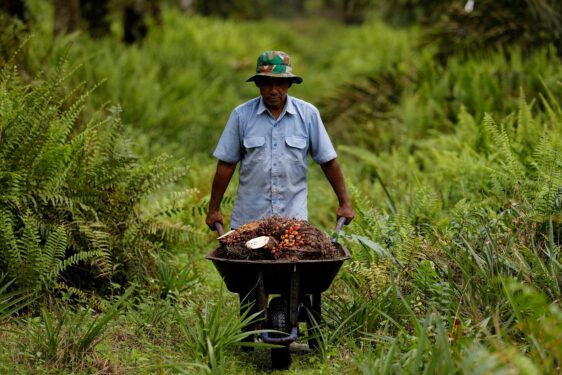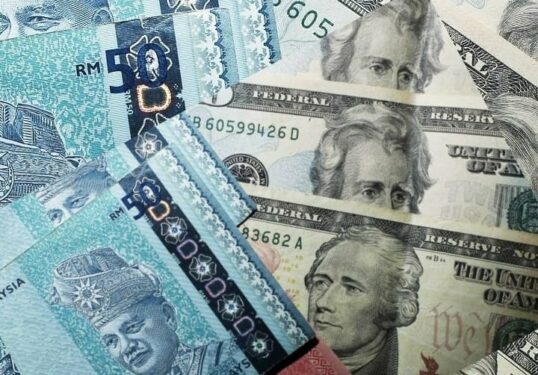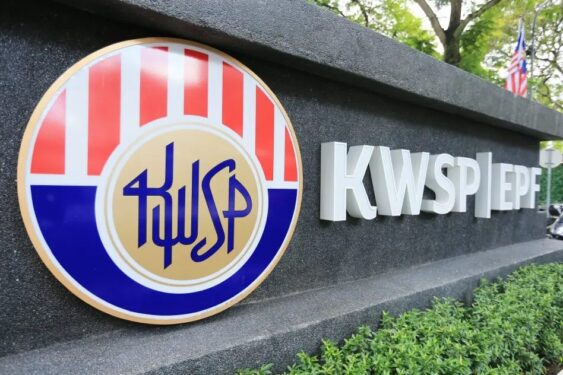THE Malaysian economy has staged a strong recovery to grow by an average growth of 9.3% in 9M 2022 – partly attributable to low-base effect – and is poised to end-2022 at 8.5% (2021: 3.1%).
The engines of growth were buoyant domestic demand and sustained expansion of exports.
There was robust consumer spending (9M 2022: +12.7%) on the back of largely pent-up demand induced by cash/financial assistance stimulus (a total of RM145 bil Employees Provident Fund [EPF] withdrawals, and Bantuan Keluarga Malaysia and loan repayment assistance).
Aided by a favourable low-base effect, private investment also strengthened from 3.3% in 1H 2022 to +13.2% year-on-year (yoy) in September 2022 amid increased business costs and the shortage of workers.
Buoyant exports continued for two consecutive years (2021: 26.1%; 11M 2022: 27.2%) thanks to both volume and price effects as reflected in higher demand of electronics and electrical (E&E) products, chemicals, metal products, crude petroleum and liquefied natural gas (LNG).
Bank Negara Malaysia (BNM) has embarked on interest rate normalisation on a measured pace as it balances between containing inflation risk and ensuring firmed economic recovery. The benchmark overnight policy rate (OPR) was hiked by a cumulative 100 basis points in three successive times to 2.75% as of end-December 2022.
Navigating the economy in 2023
The Malaysian economy is likely to see weaker economic growth estimated 4.1% in 2023 compared to estimated 8.5% in 2022, reflecting largely the normalisation of technical high base effects.
Moderating exports, the normalisation of domestic demand, continued dampening impact of inflation and higher cost of living, and the lagged effects of interest rate increases will weigh on domestic economic growth.
Certainly, the interplay of weakening external environment, new government’s macro-narratives, domestic inflation, and interest rate will ultimately shape Malaysia’s economic growth outlook for 2023.
Exports moderation to drag growth in 2023
Export growth momentum has seen softening in September-November 2022 due to weakening demand of major manufactured goods such as E&E products, chemical and chemical products, machinery equipment as well as lower prices of crude oil and palm oil (CPO).
We estimate exports to slow to 1.8% in 2023 from estimated 26.5% in 2022, reflecting the dampening impact of weakening global demand, easing prices of energy and commodities as well as being challenged by the high base effects.
Expect lower Brent crude oil price (US$95/barrel in 2023 vs US$100/barrel in 2022) and CPO price (RM3,850/metric tonne (MT) in 2023 vs RM5,123/MT in 2022).
The biggest caution ahead in 2023 is the risk of global recession. We expect weaker global economic growth estimated 2.5%-2.7% in 2023 with a mild recession in the US and Europe. China’s better economic prospect in 2H 2023 – estimated 4.5% – will act a global stabiliser as Beijing authorities unwind its zero COVID-19’s movement restrictions.
The forces that weigh on the global economy are (a) continued dampening impact of inflation and cost of living crisis though inflation risk will cool off due to higher interest rates; (b) the lagged impact of higher interest rate and tighter global liquidity conditions; and (c) bloated retail inventories adjustment as consumer demand slows.
What to watch in 2023?
Below are three key questions:
- When will the US Federal Reserve pivot on its interest rate hikes? What could be a turning point? While the Fed will shift to smaller magnitude of rate hikes (2023F: 5.00%-5.25%), the higher interest rate level will stay longer throughout 2023 until the inflation risk is anchored and come down to 3%-4%;
- Geopolitical concerns surrounding the Russian-Ukraine conflict remain; will it come to an end or develop into a new round deepening rift?; and
- Geopolitical tensions between the US and China is likely to get more intense as both Democrat and Republican lawmakers will continue to up the ante in domestic policies to counteract against China in the run up to the US Presidential Elections in 2024.
Domestic demand will normalise to more sustainable pace. Household spending is expected to normalise towards its medium-term growth trajectory from 2023-2024, estimated 5.5%-6.0% after expanded “”significantly on pent-up demand” by estimated 11.0% in 2022. At the peak of the COVID-19 pandemic in 2020, private consumption declined by 4.2% before recovering slowly to 1.9 in 2021.
Consumer spending growth migration to sustainable levels is due to:
- Post COVID-19 pent-up demand normalises as the extraordinary cash flow assistance measures such as the RM145 bil EPF withdrawals and loan repayment assistance ended;
- Continued impact of rising inflation and higher cost of living will erode purchasing power;
- Higher interest rate (borrowing cost) for high debt borrowers means that consumers don’t have as much disposable income and must cut back on spending. The good news is that labour market conditions have improved to 3.6% at end-October 2022 with increasing labour participation rate nearing pre-pandemic level.
Private investment has regained growth traction to expand by 6.3% in 9M 2022 and will likely expand by 4.5% in 2023 (2022E: 5.8%), reflecting continued investment in the manufacturing sector and some services sub-sectors such as telecommunication related to 5G network as well as climate-related green investment.
On the flip side, there have been increased business costs, shortage of workers and external uncertainties as well as businesses’ and investors’ anxieties over domestic policies landscape post the 15th General Election (GE15).
Will inflation worries subside?
Headline inflation is estimated to increase between 2.8% and 3.3% in 2023 (2022E: 3.5%) following stable commodity prices as well as a gradual move towards targeted subsidies mechanism.
With the government’s focus on tackling the impact of inflation and higher cost of living on the low-and middle-income households, we expect the targeted subsidies rationalisation to be implemented on a measured pace.
Domestic interest rates normalisation is also expected to continue. Going into 2023, Bank Negara Malaysia’s (BNM) policy rate is firmly weighted to the upside as domestic price pressures will likely remain higher than the historical average of 2.2% in 2011-2019 amid real interest rates remain negative.
We maintain our view that the central bank will raise interest rates by an additional 50 basis points (bps) back to its pre-COVID level of 3.25% in 2023 to safeguard macroeconomic stability.
Positive surprises
The unity government has to ensure a stable and good governance political system and economic ecosystem, the key pre-condition to rebuild businesses and investors’ confidence.
Both micro- and macro-narratives must be backed by good execution of institutional and economic reforms while consider the timing and pace of reforms to smoothen the transitory impact on the economy, households and businesses.
The implementation of moderate, sustainable and pro-business friendly policies is expected to increase economic growth and drive both domestic and foreign investment. It’s important to have something concrete to regain confidence and secure investments.
It is reckoned that some policies under previous administration could be subjected to review and fine-tuning while the overall policy thrusts shall still be ensuring that the policies, initiatives and projects are adding value (measurable multiplier impact) on the domestic economy.
In broad sense, both the Pakatan Harapan (PH) and Barisan Nasional’s (BN) manifesto address and provide structural solutions for the rakyat’s concerns about immediate economic issues (cost of living, income, jobs), education, healthcare and climate change-related impact.
Governance and institutional reforms also featured prominently, underscoring the importance of reforming political and public institutions to ensure effective governance, transparency and accountability of the Government administration.
Both manifestos have some notable common offerings though we believe that some initiatives can be implemented immediately, in particular concerning people-centric measures to ease the impact of inflation and higher cost of living on B40 households.
We view positively the laid-out pledges to ensure good governance practices and to undertake institutional reforms. With a convincing two-thirds majority, we hope that the unity government can front-load as well as prioritise the implementation of governance and institutional reforms.
Political reforms do not incur any fiscal costs compared to economic and social reforms.
Faced with public and investors’ lack of confidence and distrust, effective governance and credible institutional reforms are deemed critical to improving state institutional capacity as the pre-condition to build capable, transparent, efficient and trust as well as confidence in government and public institutions.
As institutions affect the economy through the creation of an environment necessary for economic growth, prosperity and development, the effectiveness of political and economic institutional reforms would not only have positive impact on economic growth but also increase the level of investment.
This is because it gives more confidence to investors, businessmen and the business environment to be more competitive for economic potential. – Jan 1, 2023
Lee Heng Guie is the executive director at Socio-Economic Research Centre (SERC) Malaysia.
The views expressed are solely of the author and do not necessarily reflect those of Focus Malaysia.












